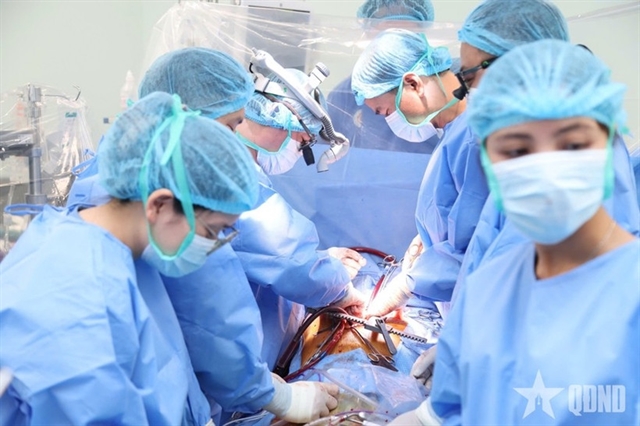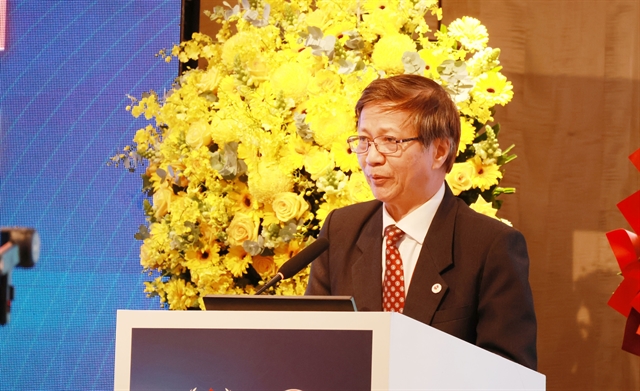 Economy
Economy

Vietnamese authorities have repeatedly encouraged businesses to quickly switch to official export channels to avoid putting themselves at risk. However, due to China’s import regulations, many Vietnamese enterprises are still not confident to select this mode to export some products to China.

|
| Trần Thanh Hải, Deputy Director of the Import-Export Department of the Ministry of Industry and Trade. |
Recently, thousands of container trucks have been seen queuing for customs clearances in northern provinces to enter China. Authorities have repeatedly encouraged businesses to quickly switch to official export channels to avoid putting themselves at risk. However, due to China’s import regulations, many Vietnamese enterprises are still not confident in choosing this method when exporting products to China.
Trần Thanh Hải, Deputy Director of the Import-Export Department of the Ministry of Industry and Trade (MoIT), shared his views on the Economic Focus programme on Vietnam News Agency Television.
What is the main cause of congestion at border checkpoints in Lạng Sơn and other northern provinces?
The congestion mainly comes from China's strict pandemic control measures under its Zero-COVID strategy. If China detects any signs of suspected infection, it can stop all activities, including customs clearance at border gates. Therefore, at the Đông Hưng-Móng Cái, Hữu Nghị and Pò Chài-Tân Thanh checkpoints, when detecting some cases in either China or Việt Nam, China has tightened customs clearance activities, which resulted in a sharp decrease in the number of vehicles passing the gate.
Under normal conditions, about 300 container trucks can be cleared per day at the Tân Thanh border gate and 500-600 vehicles at the Hữu Nghị border gate, but at present, the number is only 50-60 vehicles per day.
What are the changes in China's import policy and agricultural import regulations?
China is a huge market with great purchasing power, especially for agricultural products. Việt Nam's agricultural export has the advantage of taste which is similar to the Chinese. However, this market has undertaken many changes in import policy, especially applying stricter regulations on product quality, food safety and traceability.
From January 1 this year, China required traceability for agricultural products. Actually, this is not really a big problem for Vietnamese enterprises, but the fact that many businesses have not yet grasped the information has impeded their implementation and their delivery of goods to the border.
Could you please tell us about formal and informal exports, especially when Việt Nam is encouraging businesses to switch to official export channels?
Official-quota and unofficial-quota exports are two terms used a lot when talking about the exchange of goods across the land border, especially with China. Official-quota export is the commercial activity in which traders of both sides sign contracts according to international practices such as Incoterms, make transactions via banks, have insurance and inspection terms, and deliver through international and main border gates. These are considered official trade activities.
Meanwhile, unofficial-quota export is small-scale commercial activities for trade with small quantities. Delivery may not be bound by a contract but through oral agreement, payment is mainly cash or barter, with delivery through auxiliary border gates and open paths in the form of exchange by border residents, not international trade like official channels.
Obviously, official transactions have many advantages, but why are Vietnamese businesses not interested in official exports, especially for agricultural products?
For agricultural products, besides negotiations to reduce import taxes in the Chinese market, similarly in other markets, another important issue is the regulations on quality control and quarantine procedures. Currently, for fruit products, China officially opens its gates to only nine types of fruit from Việt Nam, so other fruit must be exchanged through the unofficial quota.
This is not necessarily because our traders or farmers don't want to use the formal form, which can also be a limiting factor, but from our side, businesses, traders and growers themselves have not yet fully grasped the information, or are not able to conduct official transactions, especially when official activities require promotion activities and be of a large enough scale to gain access to traders from China. That's why it is necessary for Vietnamese businesses to stand out to purchase domestically and negotiate with Chinese partners to conduct official transactions.
Currently in the Vietnamese market, traders, households and gardeners, after harvesting fruit, rent a truck to ship products to the border. For this method, we can only exchange goods via border residents, through auxiliary border gates and open passages. This form has risks such as slow customs clearance, or when the products are shipped through the border, the buyer over there can put pressure to decrease the purchasing price. In this case, the profit of our traders and farmers may not be much.
Recently, MoIT has recommended provinces, localities, traders and farmers grow on a large scale, meeting the standards of quality management and quarantine of the importing countries to shift to official export channels.
How will changes in China's import policy affect Việt Nam's exports in the near future?
As for the delivery of goods through the land border gate, the current situation may continue for a while because the Tết (Lunar New Year) is near, in which both Việt Nam and China have the same holiday.
For China, workers who carry out freight forwarding activities at border gates, when they return home for the New Year holiday, must comply with the 21-day quarantine period, so at this time, a lot of Chinese workers have already returned home which has significantly affected the ability to clear customs at the border gates.
With the current speed, the current amount of vehicles being stranded at border gates, especially in Quảng Ninh and Lạng Sơn provinces, will likely be cleared before or after Tết, provided that there are no more vehicles travelling to the border.
Following the direction of the Government, what measures have MOIT pushed to help release goods at border gates?
MOIT has coordinated with ministries and sectors, especially border provinces, to interact with the Chinese side at different levels. The Minister of Industry and Trade has exchanged phone calls with the Chinese Minister of Commerce three times as well as with the Secretary of the Guangxi provincial Party Committee to promote the support of trade activities while ensuring pandemic prevention and control measures. Lạng Sơn Province's leader has also discussed with Guangxi Province's authorities at lower levels of government.
The current difficulty is mainly due to pandemic control regulations which differ between the two sides. Currently, we are aiming to promote domestic consumption to relieve the stress of bringing products to the border gate, while on the other hand, MoIT encourages businesses to use other forms of transport such as sea transport with large volumes to avoid congestion at the border gate. This can also create new habits or trends for businesses so that we can favourably switch to official export activities.
In the long term, what solutions do we need to promote official exports to China and avoid the recurrence of congestion at the border gate?
First of all, we must promote negotiations on quality control and quarantine procedures to expand the list of products which we can officially export to China. For example, in addition to the nine types of fruit allowed to enter China, we must work to increase the number of full-tax fruits exported to this market.
Second, localities must step in to accompany farmers in production and consumption. Lessons in the provinces such as Bắc Giang, Hải Dương and Sơn La showed when the local leaders are directly involved in connecting and supporting farmers in consumption, not only exporting but domestic consumption will be much more favourable.
The third is about planning the growing areas according to market signals. This has been done by the Ministry of Agriculture and Rural Development in the past, but in the future, it needs to be promoted more strongly so that we can grow these areas to a large enough scale and produce according to market standards that we are aiming for export. This measure will facilitate businesses not only to purchase but also negotiate with traders in the importing country. — VNS




